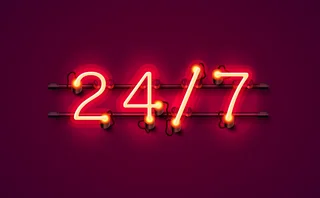Regulation special report

Click here to download the PDF
Whining or winning?
The star of the original Wall Street movie has gone off the rails, as pretty much anyone with even a transistor radio is aware of by now, with his odd pronouncements about "winning."
Real-life Wall Streeters are all about winning, and deride as "whining" what they see as overreactions by regulators to the 2008 fi nancial crisis and last year's Flash Crash. Just over a month ago, the Commodity Futures Trading Commission (CFTC) and the Securities and Exchange Commission (SEC) issued their joint recommendations in reaction to the Flash Crash, which included continuing single-stock circuit breakers and placing limits on the internalization of orders.
As participants say in the roundtable that begins on page 8, actions such as setting price bands for limits in trade orders will impact trading centers, requiring more work on data systems and upgrades of related solutions. The still uncertain fate of these recommendations and implementation of Dodd-Frank rules, however, leaves a haze obscuring what solutions brokers will need.
The SEC and CFTC appear to agree with the "whining" criticisms, keeping a lot of restrictions on high-frequency trading out of the recommendations, based on the notion that this will freeze liquidity in the markets. But the sophistication of trading systems and algorithmic trading makes it likely that market professionals would be able to program in the constraints contained in new rules, and keep on winning despite them.
The industry's fi rst stop on that winning path should be rethinking microstructures used to control high-speed markets, independent fi nancial technology consultant Bob Giffords said recently. Secondary messaging containing latency data, alpha or risk signals, news data and other meta data will play a part in these efforts, he noted.
These types of technological advances in market operations were not acknowledged in the SEC-CFTC recommendations, Giffords says. If the regulators' recommendations are a step behind market realities, their lack of resources appears to be the cause, says Robert Colby, partner at Davis Polk & Wardwell, and former SEC deputy director of trading and markets. "They probably have 35 more proposals in the pipeline," he says. "If someone asks if they want to talk about dark [liquidity] disclosure, they say, ‘Yes, next year.'"
Even if the new rules are a step behind the best technology, that may not be so for every market participant. As our roundtable participants see it, there still will be systems and solutions work to be done to ensure compliance. Why risk losing by ignoring that?
Only users who have a paid subscription or are part of a corporate subscription are able to print or copy content.
To access these options, along with all other subscription benefits, please contact info@waterstechnology.com or view our subscription options here: http://subscriptions.waterstechnology.com/subscribe
You are currently unable to print this content. Please contact info@waterstechnology.com to find out more.
You are currently unable to copy this content. Please contact info@waterstechnology.com to find out more.
Copyright Infopro Digital Limited. All rights reserved.
As outlined in our terms and conditions, https://www.infopro-digital.com/terms-and-conditions/subscriptions/ (point 2.4), printing is limited to a single copy.
If you would like to purchase additional rights please email info@waterstechnology.com
Copyright Infopro Digital Limited. All rights reserved.
You may share this content using our article tools. As outlined in our terms and conditions, https://www.infopro-digital.com/terms-and-conditions/subscriptions/ (clause 2.4), an Authorised User may only make one copy of the materials for their own personal use. You must also comply with the restrictions in clause 2.5.
If you would like to purchase additional rights please email info@waterstechnology.com
More on Regulation
Experts say HKEX’s plan for T+1 in 2025 is ‘sensible’
The exchange will continue providing core post-trade processing through CCASS but will engage with market participants on the service’s future as HKEX rolls out new OCP features.
No, no, no, and no: Overnight trading fails in SIP votes
The CTA and UTP operating committees voted yesterday on proposals from US exchanges to expand their trading hours and could not reach unanimous consensus.
Big xyt exploring bid to provide EU equities CT
So far, only one group, a consortium of the major European exchanges, has formally kept its hat in the ring to provide Europe’s consolidated tape for equities.
Jump Trading CIO: 24/7 trading ‘inevitable’
Execs from Jump, JP Morgan, Goldman Sachs, and the DTCC say round-the-clock trading—whether five or seven days a week—is the future, but tech and data hurdles still exist.
Pisces season: Platform providers feed UK plan for private stock market
Several companies in the US and the UK are considering participating in a UK program to build a private stock market composed of separate trading platforms.
How to navigate regional nuances that complicate T+1 in Europe
European and UK firms face unique challenges in moving to T+1 settlement, writes Broadridge’s Carl Bennett, and they will need to follow a series of steps to ensure successful adoption by 2027.
Nasdaq leads push to reform options regulatory fee
A proposed rule change would pare costs for traders, raise them for banks, and defund smaller venues.
The CAT declawed as Citadel’s case reaches end game
The SEC reduced the CAT’s capacity to collect information on investors, in a move that will have knock-on effects for its ongoing funding model case with Citadel.








